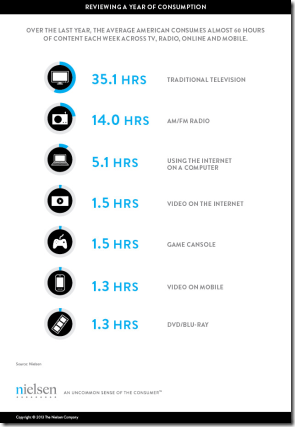“The problem with ‘self-regulation’ is that it’s usually ‘no regulation’.”
Seth Godwin
My involvement in scenic preservation since retiring four years ago from a forty year-career in visitor-centric economic development has given me a front row seat on how regulations evolve, at least in North Carolina, and it isn’t what I thought.
Equally distressing has been learning of the lack of vigor with which they are enforced at the federal level when states and their constituent counties violate or end-run agreements such as those related to the Highway Beautification Act.
A variety of studies by experts explain why this is the case, but also why it is counterintuitive to what those in high office seem to think. But while drilling down, I’ve also come across some future solutions.
Many politicians attack regulations in the name of being pro-business, others defend them as being necessary to compensate for marketplace failures, especially where costs are not fully incorporated by the market but are instead pushed off on the general public.
Economists call these negative externalities.
The latter view is called the “public interest” approach, which is how I have always naively viewed regulations. But there is a far more insidious rationale called “public choice,” which turns out to be much more prevalent now.
This “public choice” approach refers to the fact that, once enacted, regulations and the very agencies in charge of imposing and enforcing them are “captured by the businesses and industries they are supposed to regulate.”
Often, as has been the case with outdoor billboard companies, regulatory “capture” is gained with the complicity by billboard interests in elected office which in North Carolina were deemed by their peers not to have a conflict of interest because the benefits will accrue to all billboard companies, not just to the billboard owners behind the legislation or regulations.
This convoluted reasoning is why transparency isn’t what it is so often cracked up to be and as shown in studies, often serves as an enabler for others to cross the line, a shady quid pro quo.
An excellent study published in 2006 revealed that business interests have far greater influence in regulatory rule-making than either public interest groups or the general public, more than twice as much, and not because their input was more substantive.
Ironically, or maybe cynically, Republican candidates seem prone to pose the issue of regulatory reform as being pro-business.
Democratic party candidates often defend regulations as being pro-consumer but seem to fail to understand that this is the very reason regulatory reform as a means to cleanse them of “capture” should be so important as a bipartisan issue.
The news media, as with most things counterintuitive, usually settles for just parroting “bumper sticker” slogans. Unraveling misperceptions such as this must seem too daunting. So regulatory reform is often reported with little or no penetrating analysis and never with persistence.
This all clouds the issue of regulatory reform which has real day-to-day consequences.
While it doesn’t explicitly account for “externalities,” an excellent analysis co-authored by Dr. John Dawson, a peer with my friend Dr. Dana Clark who heads the hospitality degree program at Appalachian State University’s Walker School of Business, calculates that federal regulations have reduced economic growth by 2% a year between 1949, the year after I was born and 2005.
Regulations in the public interest are meant to act as a sort of hidden tax on activities where the free market fails to account for negative costs that are pushed off onto the general public instead. But because the regulations aren’t revisited for simplification or to simplify or remedy unintended consequences, they often fail in that purpose.
Regulatory reform is far from simple even when genuinely and/or astutely undertaken.
Findings from studies about regulatory reform among states are mixed as to whether legislatures or governors are more effective, but most give the nod to governors. Courts are shown to play an ineffective role, especially where judges are elected such as in North Carolina.
Here, the legislature set up a commission to oversee rule-making, but failed to insulate it from partisanship, abuse of power by individual legislators or “capture-driven” by business interests. Unfortunately, this commission often pretends to be a court, although unauthorized.
Recent regulatory legislation starts off with a few pages of just that. Then it succumbs to six times that number of pages filled with “regulatory capture” by extremely narrow “whiner” business interests.
This legislation sets back true regulatory reform by decades. You can often see these same “whiner” interests at work in a local chamber of commerce.
Years ago, committees in these member-driven local business advocacy organizations were carefully balanced to represent all interests including the general public’s and that of the communities whose business climates they were meant to represent.
Many have now devolved to be havens for self-appointed committees of “whiners” working to end run more legitimate forums that are free of conflicts of interest, or worse, to push on behalf of special interests including the “capture” of regulatory rule-making.
Executives who once safeguarded the integrity of these organizations from whiners now often enable them instead or lead ambushes in hopes of gaining a member or two.
Rather than pro-business, many groups like this are complicit in regulatory “capture” and anathema to business climates.
They would have been well served to have attended a one-day symposium last spring at NYU’s Stern School of Business entitled “Darwin’s Business: New Evolutionary Thinking About Cooperation, Groups, Firms and Societies.”
In writing recently about the event in Forbes, Stern business professor Dr. Jonathan Haidt and Binghamton University biology professor Dr. David Sloan Wilson noted that:
“…people have been applying Darwin to business since Darwin’s day, but they applied a cramped and crippled version, assuming that Darwinism’s primary postulate was that the strong do (and should) crush the weak.”
Instead, evolution is actually far more about cooperation. Haidt provides Chapter 9 of his best seller The Righteous Mind as background to this notion, which is highly recommended to anyone interested in legitimate regulatory reform.
The Stern School of Business is the first to think about and seriously relate modern evolutionary science to the world of business. Visit Evolution: This View of Life or click here for snippets as well as full-length versions of the talks at the spring symposium held at Stern.
Integral to regulatory reform should be the notion of “coopetition,” a term we used during my now-concluded career in community destination marketing.
It refers to the integration of cooperation with competition. What is good for public interest is good business, what is good for business must be in the public interest.
Regulatory reform is critical. As a society we can no longer afford regulatory “capture,” a form of hostage taking.
We must break the strangle-hold that narrow-interest whiners have among business interests and on regulatory rule-making. This means rebalancing business groups, agencies and elected officials to pursue only the most practical, proven and cost-effective regulations possible.
This means regulations that are both in the broader public and business interests.
But since regulatory rule-making is now dominated by business interests, often to the detriment of business in general, a good start for any effort at regulatory reform would do well to begin with Dr. Haidt’s overview entitled “Working With Human Nature To Improve Business Ethics.
Another intriguing idea is open-source regulatory reform and rule-making. A good overview of how this might work is gained by listening to a TED talk by Beth Simone Noveck who led President Obama’s Open Government Initiative who also founded the “Do Tank.”
Three years ago, the President issued a an executive order to improve regulations and rule-making. It called required government agencies among other things to (underlining is mine):
(1) propose or adopt a regulation only upon a reasoned determination that its benefits justify its costs (recognizing that some benefits and costs are difficult to quantify);
(2) tailor its regulations to impose the least burden on society, consistent with obtaining regulatory objectives, taking into account, among other things, and to the extent practicable, the costs of cumulative regulations;
(3) select, in choosing among alternative regulatory approaches, those approaches that maximize net benefits (including potential economic, environmental, public health and safety, and other advantages; distributive impacts; and equity);
(4) to the extent feasible, specify performance objectives, rather than specifying the behavior or manner of compliance that regulated entities must adopt; and (5) identify and assess available alternatives to direct regulation, including providing economic incentives to encourage the desired behavior, such as user fees or marketable permits, or providing information upon which choices can be made by the public.
More importantly, the President called for more public involvement in regulations and rule-making, a 21st Century approach. In a related move he issued an order opening up government data for public and private use.
As noted by Noveck in her speech, what we have done to involve the public until now is primarily with voting and juries. This is much too slow and cumbersome in today’s world.
In her speech, she gives a number of examples where open source government is at work, including the U.S. Patent Office and states such as Texas which use “policy wikis” to craft better regulations and policies and to simplify the ones that exist.
It is not about privatization or transparency, both of which have serious drawbacks. She gives a number of examples. There may not yet be legal precedent for open-source government but there should be.
I think she is on to something.








